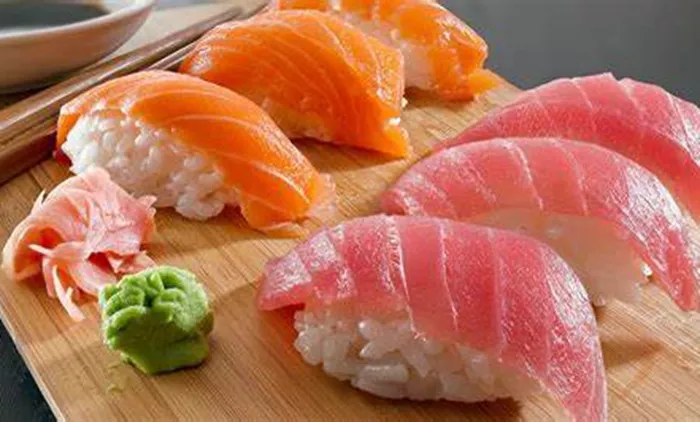Salmon and tuna are two of the most popular fish consumed in the United States, both known for their delicious flavors and nutritional benefits. As heart-healthy protein sources, they are frequently included in dietary recommendations, with the Dietary Guidelines for Americans advising adults to eat at least eight ounces of fish weekly, ideally in two to three servings. But when it comes to health, which fish comes out on top? Dietitians have weighed in on the nutritional differences between salmon and tuna, exploring their health benefits.
Nutritional Overview of Salmon
Salmon encompasses various species, primarily categorized into Pacific and Atlantic varieties. Most Pacific salmon, which include sockeye, coho, pink, chum, and king (Chinook), are wild-caught, while all Atlantic salmon sold in the U.S. is farmed, according to the National Oceanic and Atmospheric Administration (NOAA).
From a nutritional perspective, both Atlantic and Pacific salmon are fairly similar, according to Caroline Susie, a registered dietitian nutritionist and spokesperson for the Academy of Nutrition and Dietetics. However, wild-caught salmon tends to have slightly higher levels of protein and omega-3 fatty acids, while Atlantic salmon is generally richer in fat and calories, explains registered dietitian Frances Largeman-Roth.
For instance, a 3-ounce serving of fresh wild sockeye salmon, cooked using dry heat methods like roasting, contains:
- Calories: 155
- Protein: 22 grams
- Fat: 6 grams
- Vitamin B-12: 3.8 micrograms (158% of daily value)
- Vitamin D: 14 micrograms (71% of daily value)
- Niacin: 8.6 milligrams (54% of daily value)
This nutrient-rich fish provides a mild, buttery flavor and a tender texture, making it a delicious addition to various dishes.
Nutritional Overview of Tuna
Tuna consists of several species of large saltwater fish, including skipjack, albacore, yellowfin, bluefin, and bigeye. The nutritional profile and mercury content can vary significantly among these species, with yellowfin, or ahi, being a popular choice due to its leaner composition and sustainability.
According to the U.S. Department of Agriculture (USDA), a 3-ounce serving of fresh yellowfin tuna, cooked using dry heat, offers:
- Calories: 110
- Protein: 25 grams
- Fat: 0.5 grams
- Selenium: 92 micrograms (167% of daily value)
- Niacin: 18 milligrams (112% of daily value)
- Vitamin B-6: 0.9 milligrams (53% of daily value)
With its firmer texture and meatier taste, tuna serves as a nutritious, low-calorie protein option.
Salmon vs. Tuna: Key Nutritional Differences
While both salmon and tuna are excellent protein sources, they have distinct nutritional profiles.
Omega-3 Fatty Acids
“The primary distinction between salmon and tuna lies in their fat content,” says Susie. Salmon typically contains more fat per ounce, translating to a higher calorie count compared to tuna. The majority of the fat in salmon is beneficial unsaturated fat, particularly omega-3 fatty acids, which are linked to numerous health benefits, including heart and brain health, and reducing the risk of cognitive decline.
Wild sockeye salmon delivers approximately 1.5 grams of omega-3 fatty acids per serving, whereas yellowfin tuna has only about 0.1 grams. The National Institutes of Health recommends adults consume between 1.1 to 1.6 grams of omega-3s daily, indicating that salmon is the superior source.
Protein Content
Both fish are rich in protein, but tuna is slightly higher in protein content. A 3-ounce serving of yellowfin tuna provides 25 grams of protein compared to salmon’s 22 grams. Given that protein is essential for muscle repair and promoting satiety, tuna may be the better option for those prioritizing a low-calorie, protein-dense food.
Nutritional Benefits
Both fish boast a wealth of vitamins and minerals. Salmon excels in vitamin D content, essential for calcium absorption and overall health, offering 14 micrograms per serving, while tuna provides just 2 micrograms. Additionally, salmon is a significant source of vitamin B12, critical for DNA synthesis and maintaining nerve and blood cell health.
Conversely, tuna stands out for its selenium and niacin content, which aid in energy metabolism and cholesterol management, respectively. It also provides substantial amounts of vitamin B6, necessary for metabolism and immune function.
Mercury Levels in Fish
Mercury levels in fish vary based on species and size. While most fish contain trace amounts of mercury, high levels can pose health risks, particularly to pregnant women and young children. Salmon is generally low in mercury and is categorized as a “best choice” by the FDA, recommended for consumption two to three times a week. In contrast, tuna tends to have higher mercury levels, particularly larger species, and should be limited to once a week.
Conclusion
Both salmon and tuna offer health benefits, making them excellent dietary options. The choice between the two ultimately depends on individual dietary needs:
For Heart and Brain Health: Salmon is the superior choice due to its higher omega-3 fatty acid content.
For Higher Protein and Lower Calories: Tuna may be preferred, particularly for those aiming to increase protein intake while managing calorie consumption.
Nutrition experts encourage incorporating both fish varieties into a balanced diet to maximize health benefits. Canned versions of both salmon and tuna retain similar nutritional profiles and are cost-effective options for quick, nutritious meals. When purchasing canned fish, look for options packed in water or heart-healthy olive oil, with lower sodium levels and safe-caught sourcing.
Related Topics
What Vitamins Should You Take In The Morning And At Night?
































